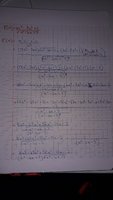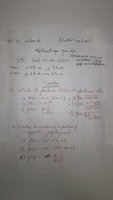Greetings, I've been having some trouble with this one function where I need to get its derivative, I tried using a derivative calculator but my answer never matches up with what the calculator gets. Plus, the calculator never simplifies it until the end so I don't have any idea if it's right or wrong. The step by step instructions aren't really helping either since they're using some things I don't fully comprehend.
I'm using the quotient rule, I think that's its name, I'm referring to the following formula : (u'v.v'u)/v2.
I used this formula : u'/2√u for the square root part in the denominator.
I'm using the quotient rule, I think that's its name, I'm referring to the following formula : (u'v.v'u)/v2.
I used this formula : u'/2√u for the square root part in the denominator.


